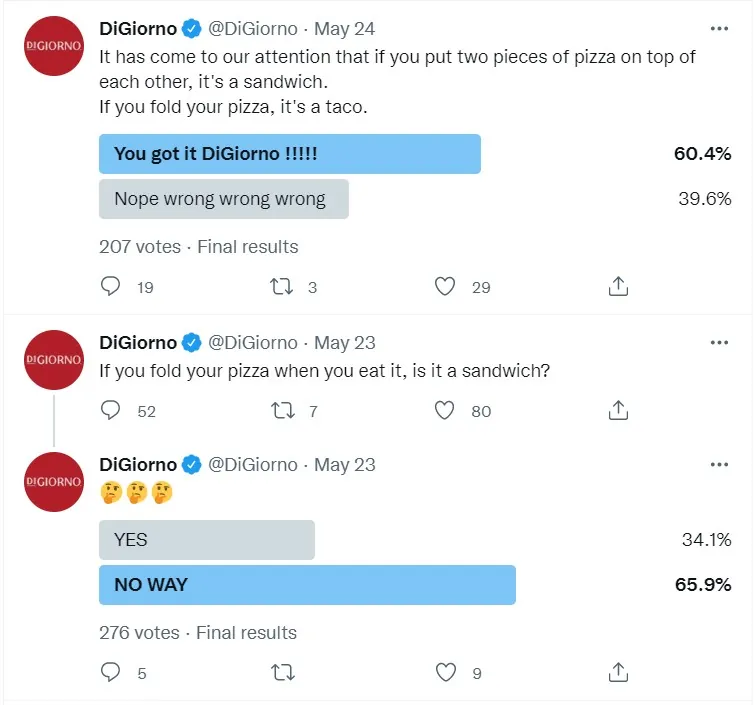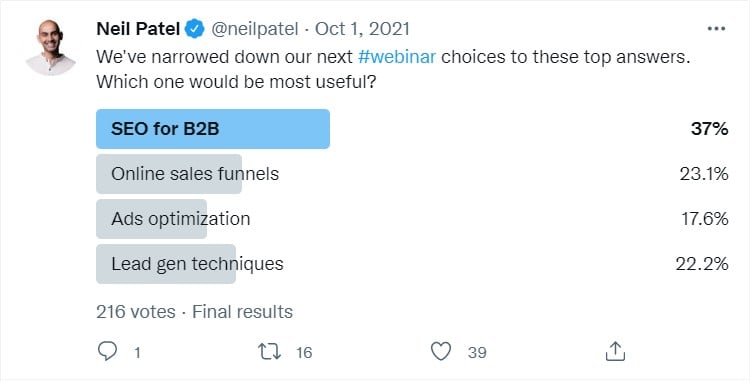
Today, promoting a business on social media is both more important and harder than ever.
In the early days of networks like Twitter, there were fewer users and the algorithms tasked with distributing content into feeds were less monetized. As of 2022, Twitter has nearly 230 million active users, and its algorithms are tailored to prop up accounts that already have a large following, or content that already has plenty of engagement.
While anyone can set up an account, the barrier for entry to actually get your tweets seen is a lot higher – a problem for many small businesses. Essentially, you need more followers and engagement to get more followers and engagement!
At the same time, Twitter remains one of the best places to reach consumers who might be interested in your business. But the days of being successful by just setting up an account and tweeting regularly are over. Now you need to plan carefully and find ways to get your account growing on its own, so Twitter will then notice its growing popularity and put your posts in more feeds. As a result, many people are relieved to learn they can buy poll votes on Twitter to improve their engagement metrics.
Polls are useful to your overall Twitter marketing strategy in several ways:
- They make engagement easy. Answering a poll takes less than a second, and most people are opinionated. Many users are eager to share their preferences without spending time typing out a comment. Let’s have a look on the account of the pizzeria @DiGiorno

- Twitter polls also help you learn about your target audience. You can use polls to find out what your fans like and don’t like, what new products or services might interest them, where they shop for your product category, etc. Don’t forget demographics and psychographics – use your questions to learn who your target market is and what their interests are outside of your product category. This can give you insights for cross-promotion opportunities in the future.
- Polls are great for promoting products or services in a fun way. You can make up silly poll questions about your product: What’s more exciting, the return of our deep dish pizza or a winning lottery ticket? Who would win in a popularity contest, our mascot or the tooth fairy?
- You can also hype up a big debate regarding your brand. Nintendo has asked players what gear helps them the most in a certain game or which teammate they should pass the ball to. McDonald’s pitted McGriddle fans against Egg McMuffin lovers in a poll.
- Polls also make good sources of feedback when introducing new products or services. You can seek out users’ honest opinions, and may learn early on if something isn’t working. Then you can tweak the product or service, or consider selling it to a different target market. Also you can get the opinion of your audience regarding the top questions in your niche, like @neilpatel did.

- They offer immediate gratification for users. Polling tweets show the number of total votes and percentages per answer right away, so people can vote and then look at the results right away.
Tips to make Twitter polls work for you
Check out our ideas to harness the power of polls for your Twitter marketing plans:
- First, consider your brand personality. If your brand is very serious and professional, you probably don’t want to post a lot of joke questions. However, you could ask followers about industry issues that concern them, which types of products they currently use, how they deal with relevant issues, etc. If you do have a more fun, lighthearted approach, think about current trends or events you can include in polls and relate to your brand. It could be something like, “Which Olympic sport do you think our new game character could compete in?”
- Think about your own level of comfort with Twitter. Some owners or marketing managers spend little to no time on the site for personal use, and this is a mistake. If you’re going to be managing the company’s Twitter account and polls, you need to be familiar with what does and doesn’t work on the site, especially for accounts in your industry. Follow some competitors, as well as some of their followers, then spend a few minutes each day scrolling through your Twitter feed. Notice what kind of polls and tweets are getting the most attention.
- Test out a new poll of your own each day and watch to see the responses you get. Pick out the most successful ones and think about what they have in common and how you can replicate that success. Save all poll data for later analytics.
- Don’t forget to read the comments and engage with people who had something to add. This increases engagement even more. Check how Julian Shapiro (@Julian) engages with his audience in comments under his poll.


- Find ways to reuse data from polls. You can reference this data in marketing messages or informational tweets. For example, “64% of you claimed that pineapple goes on pizza, but our daily sales don’t lie, so we’re giving away a free pineapple pie to the next person who comes to the store and mentions this tweet.”
- Get your hashtags right. It’s recommended that you limit any tweet to 1-3 hashtags, so choose carefully. Using low-competition hashtags can actually help because your poll is more likely to be seen versus using high-competition tags that many others utilize.
- Vary the times you publish polls, starting with whatever times are typically best for your account. (These may vary depending on your audience, but in general, Tuesdays through Thursdays are good days, and late morning or early afternoon are ideal times.) Then occasionally post a poll at an odd time and see what happens. If it’s unsuccessful, you can go back to what you know.
- Let the audience know if you’ve made a decision based on poll data. You might say something like, “You asked for it – we’re introducing a mint chocolate chip flavor next month after it won our New Flavor of the Month poll. Stop by our store for a free sample on Monday!”
With these tips, you should be able to grow your engagement metrics and following over time, while promoting your business. But if your account is too small for your polls to get seen, don’t panic – this happens a lot with new business profiles. Few followers and low engagement numbers tell the Twitter algorithm not to place your content in many user feeds, but you can counter this problem by buying some poll votes. This will lead to organic growth and results for your future polls.


